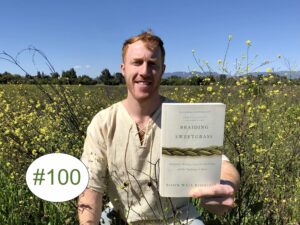 Those of us who have been raised in Western cultures believe that we humans are separate from, and superior to, the natural earth. This philosophy is descendant from the Ancient Greeks who were the first to differentiate us humans from plants and animals and who first began questioning why we are the superior beings on the planet. These same thoughts (the importance of the individual) were strengthened mightily by Enlightenment philosophy and centuries of European “progressivism.”
Those of us who have been raised in Western cultures believe that we humans are separate from, and superior to, the natural earth. This philosophy is descendant from the Ancient Greeks who were the first to differentiate us humans from plants and animals and who first began questioning why we are the superior beings on the planet. These same thoughts (the importance of the individual) were strengthened mightily by Enlightenment philosophy and centuries of European “progressivism.”
Across the ocean, in a land that white men would eventually call ‘the new world’ was a different way of thinking: we humans come from, and are inferior to, the earth. This is the way of the indigenous peoples that have had their land and their culture slowly and torturously stripped from them. Despite these hardships, many have spent their lives trying to capture and restore indigenous knowledge for the benefit of us all, our author adding her ecological and native expertise to this endeavor.
It all starts with how we relate to the plants and animals of this earth. “In the Western tradition there is a recognized hierarchy of beings, with, of course, the human being on top” but “in Native ways of knowing, human people are often referred to as ‘the younger brothers of Creation.’” Native cultures recognize that plants and animals have been on the earth far longer than we humans, and because of their tenure they have accumulated immense knowledge that we can learn from them. The biggest difference is evident in the way that each culture relates to plants: Western culture sees a plant as an ‘it;’ Indigenous culture sees a plant as a ‘person.’ “Imagine seeing your grandmother standing at the stove in her apron and then saying of her, ‘Look, it is making soup. It has gray hair,’ Kimmerer writes. We would never refer to a person as ‘it’ because that would be a profound act of disrespect. “‘It’ robs a person of selfhood and kinship, reducing a person to a mere thing. So it is that in Potawatomi and most other Indigenous languages, we use the same words to address the living world as we use for our family. Because they are our family.”
Out of this familial philosophy blossomed the practice of gratitude for the gifts of nature. When the Indigenous people sought to cut down a tree in order to make a canoe, for example, they would first ask the forest which tree might be available. They would fell a tree for use only if there was one available and willing. When harvesting grass and bark to weave into a basket, they will offer a gift to the forest first—they believe that anything taken should be reciprocated for. They believe that if we take care of the land, the land will likewise take care of us, and everyone can live together in harmony.
In the wake of centuries of Western thought dominating current culture, global society has come to a point of seriously harming the planet. It’s not just the raising global temperature, but also the toxins in the air and water, the acid rain, the heavy metals and synthetic hormones in our water, the destruction of forests and ecosystems, and the general way that we relate to nature as something to be dominated and manipulated for our benefit. If we want to save our planet, Kimmerer says, we must change our relationship to the nature world.
“People often ask me what one thing I would recommend to restore relationship between land and people,” she writes, “my answer is almost always, ‘Plant a garden.’ It’s good for the health of the earth and it’s good for the health of people.” In this simple statement we can see the urgent message she expresses in her book: the earth and the people are meant to live harmoniously for the benefit of both.


